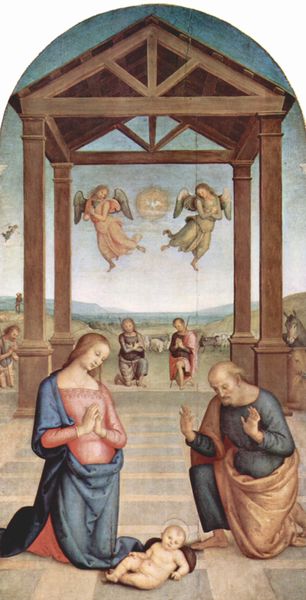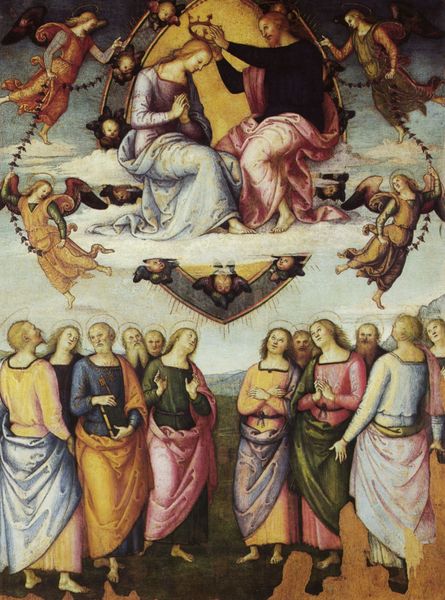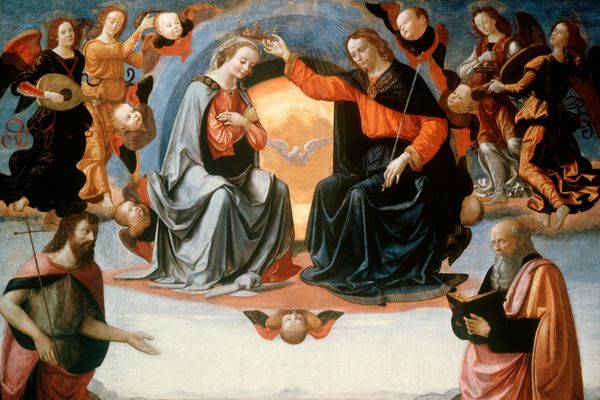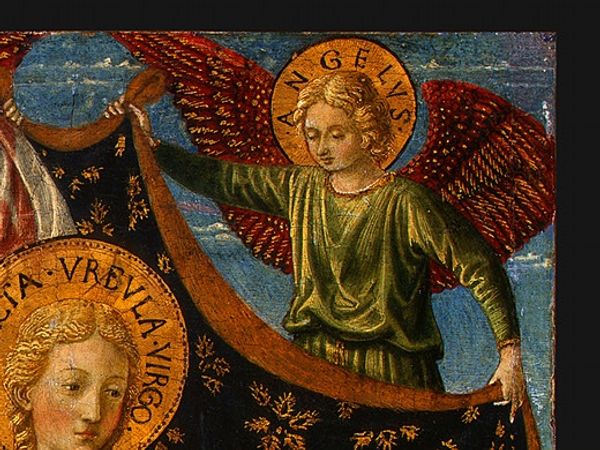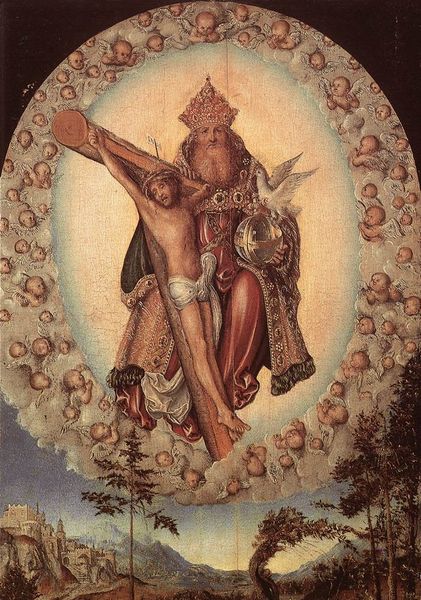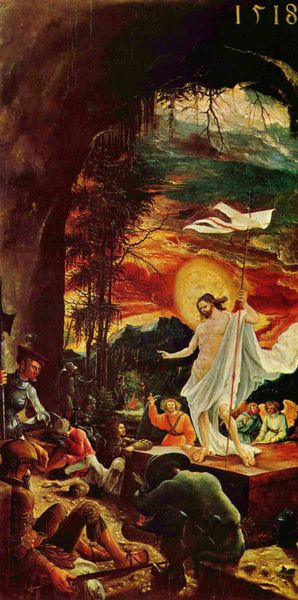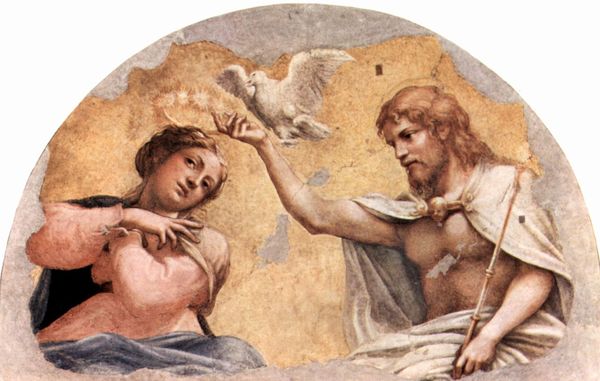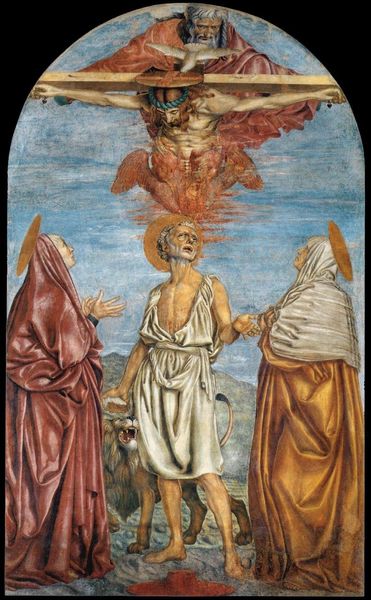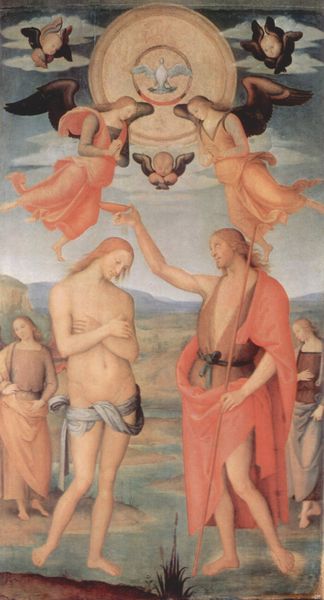
tempera, painting
#
portrait
#
tempera
#
painting
#
figuration
#
christianity
#
italian-renaissance
#
early-renaissance
#
watercolor
Copyright: Public domain
This detail of the St. Augustine Polyptych was painted by Pietro Perugino, likely sometime in the late 15th or early 16th century, with tempera on wood. Tempera, made from pigment mixed with egg yolk, dries quickly and creates a matte finish. Layering thin glazes was a common technique, allowing artists to build up depth and luminosity, as we can see in the delicate modelling of the angel’s faces. What strikes me most about this work is the labor involved. Each brushstroke, each carefully mixed batch of tempera, represents hours of skilled work. The application of gold leaf, though not visible in this detail, would have added another layer of complexity and time. We see evidence of the workshop in the carefully delineated folds of the angel’s robes, the attention to detail suggesting the hand of a master craftsman and his assistants. In a world increasingly dominated by mass production, it is worth remembering the human effort embedded in these exquisite paintings, which elevates the status of craft.
Comments
No comments
Be the first to comment and join the conversation on the ultimate creative platform.
